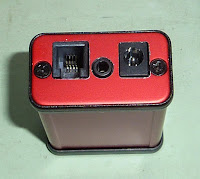*
Sunday and the struggle goes on. I don't have enough plywood for a full core layer at right angles for both veranda doors. You can't just glue three vertical layers together or they will curl horizontally. There must be an uneven number of plies all at right angles to each other.
It started pouring down at 12.15 just as I was laying out my various off-cuts on the lawn. A mad dash to put them all away again. Only then did I remember I'd opened the observation slit for more light. You wouldn't believe the excitement I can have on a Sunday morning without even leaving home. Collecting another sheet of ply means taking the big trailer and a 20 mile, round trip on a weekday.
I'm using a core of cross sheet off-cuts made up of three narrower strips all glued together. This will satisfy the need for cross laminations. While leaving the doors 36mm of solid plywood in thickness. I could bi-fold them with central hinges on a vertical line. They could then be folded back to allow me to pass along the veranda without hindrance or having to close the doors to get past. With the trapdoor prevenying me from doing so! Grr?
With the hinge line suitably placed the doors could be folded back against the outer faces of the octagon.This would also allow them to be opened for ventilation without becoming sails in the wind. I'm afraid I have developed a mindset where I rarely used the doors due to the hindrance they caused. I must be careful to make them far more practical this time.
Monday: The three layer doors have been glued and put under weights on the shed floor. I used the trailer as a flat surface last time and it flexed downwards under all the weight. Fortunately the doors gradually flattened out again under their own supervision. The shed floor is flatter and doesn't flex but needs bare floor space for such activities. I stacked the doors on top of each other and then loaded everything heavy I had to hand on top. Despite the considerable total weight the pressure per square wotsit is still very low compared with screw clamps.
Tuesday morning was spent trimming angles on the outer edges of the thicker doors to fit snugly against the octagon posts. The thicker doors need longer machine screws for all the [sliding] door bolts and handles. Counter-sinking [or rather counter-boring] will help avoid making a special purchase. Lock nuts internally will avoid the screws being undone from the outside without easy access with suitable tools from both sides. Wood screws offer no security at all to a determined thief. The screw head's drive sockets can be filled with epoxy but it's a pain if you ever want to remove them in a hurry.
*






























